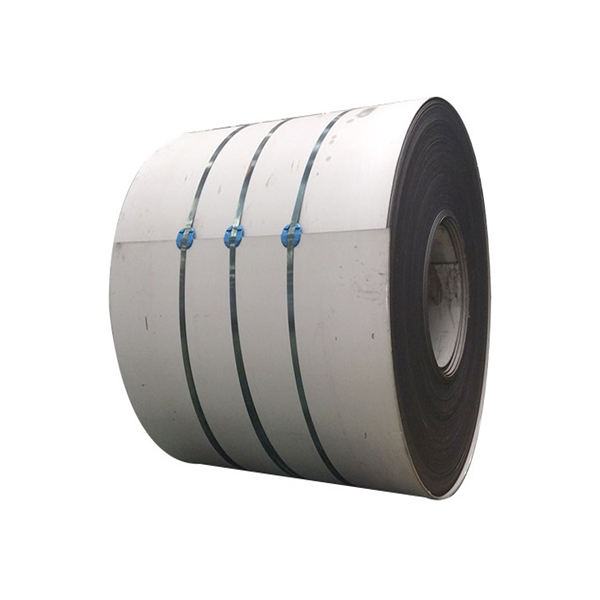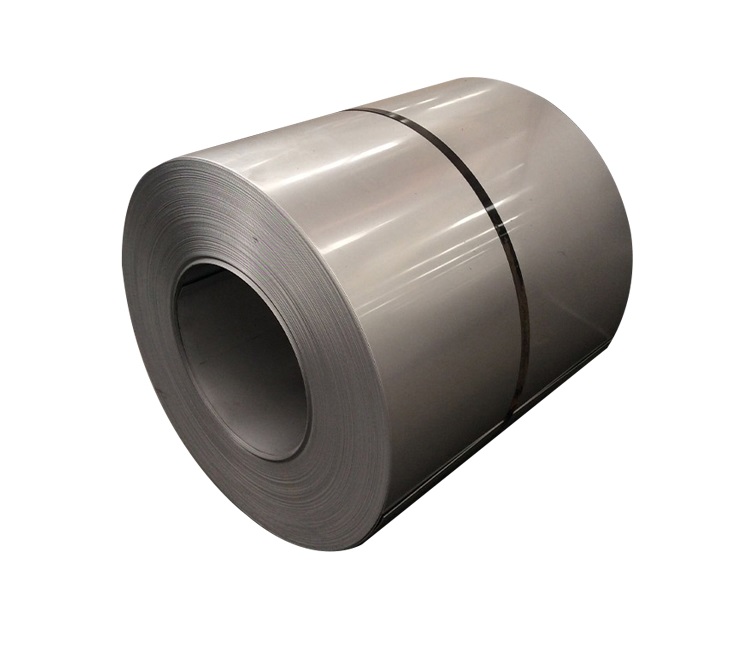STAINLESS STEEL PRODUCTS
904L STAINLESS STEEL STRIP
Material: 904L stainless steel strip
Grade 904L stainless steel strip is a non-stabilized austenitic stainless steel coil with low carbon content. This high alloy stainless steel coil is added with copper to improve its resistance to strong reducing acids, such as sulphuric acid. The 904L stainless steel strip is also resistant to stress corrosion cracking and crevice corrosion. Grade 904L stainless steel strip is non-magnetic, and offers excellent formability, toughness and weldability.Grade 904L stainless steel strip contains high amounts of expensive ingredients, such as molybdenum and nickel. Today, most of the applications that employ grade 904L stainless steel strip are replaced by low-cost duplex stainless steel strip 2205
Corrosion Resistance :
Grade 904L stainless steel strip have excellent resistance to warm seawater and chloride attack. The high resistance of grade 904L stainless steel strip against stress corrosion cracking is due to the presence of high amounts of nickel in its composition. Moreover, the addition of copper to these grades develops resistance to sulphuric acid and other reducing agents in both aggressive and mild conditions.The corrosion resistance of grade 904L stainless steel strip is intermediate between super austenitic grades, with 6% molybdenum content, and standard 316L stainless steel strip austenitic grades. Grade 904L stainless steel strip is less resistant to nitric acid than grades 304L and 310L, which are free of molybdenum. This steel grade needs to be solution treated following cold working, to achieve maximum stress corrosion cracking resistance under critical environments.
Heat Resistance :
Grade 904L stainless steel strip offer good oxidation resistance. However, the structural stability of this grade collapses at high temperatures, particularly above 400°C.
Heat Treatment :
Grade 904L stainless strips can be solution heat-treated at 1090 to 1175°C, following by rapid cooling. Thermal treatment is suitable for hardening these grades.
Welding :
Welding of grade 904L stainless steel strip can be performed using all conventional methods. This grade does not require pre-heat and post-weld heat treatments. Grade 904L can be subjected to hot cracking in constrained weldment. Grade 904L electrodes and rods are used for welding grade 904L strips according to AS 1554.6.
Fabrication :
Grade 904L stainless steel strip are high purity coils with low sulphur content. They can be machined using any standard methods. These grades can be readily bent to a small radius under cold conditions. Although subsequent annealing is not required in most cases, it should be carried out when the fabrication is performed under severe stress corrosion cracking conditions.
Applications :
Some of the major applications of grade 904L stainless steel strip include:
- Wiring in electrostatic precipitators
- Oil refinery components
- Seawater cooling devices
- Gas scrubbing plants
- Pulp and paper processing industries
- Acetic, phosphoric and sulphuric acid processing coil
Grade : 904L stainless steel coil
Orign : TISCO ZPSS etc.
Thickness : 0.8-3.0mm cold rolled ; 3.0-100mm hot rolled
Width : we can also help cut as you require
Length: we can make the length as you require
Finish : 2B , NO.1 NO.4 HL Mirror , 6K , 8K etc .
Chemical Composition :
| Grade | C | Mn | Si | P | S | Cr | Mo | Ni | Cu | |
| 904L | min.max. | -0.02 | -2 | -1 | -0.045 | -0.035 | 1923 | 45 | 2328 | 12 |
Mechanical Properties :
| Grade | Tensile Strength (MPa) min | Yield Strength 0.2% Proof (MPa) min | Elongation (% in 50mm) min | Hardness | |
| Rockwell B (HR B) | Brinell (HB) | ||||
| 904L | 490 | 220 | 36 | 70-90 typical | 150 |
Physical Properties :
| Grade | Density (kg/m3) |
Elastic Modulus (GPa) |
Mean Co-eff of Thermal Expansion (µm/m/℃) | Thermal Conductivity (W/m.K) |
Specific Heat 0-100℃ (J/kg.K) |
Elec Resistivity (nΩ.m) |
|||
| 0-100℃ | 0-315℃ | 0-538℃ | At 20℃ | At 500℃ | |||||
| 904L | 7900 | 190 | 15 | - | - | 11.5 | - | 500 | 952 |
Grade Specification Comparison :
| Grade | UNS No | Old British | Euronorm | Swedish SS | Japanese JIS | ||
| BS | En | No | Name | ||||
| 904L | N08904 | 904S13 | - | 1.4539 | X1NiCrMoCuN25-20-5 | 2562 | - |
Possible Alternative Grades :
| Grade | Reasons for choosing grade 904L |
| 316L | A lower cost alternative, but with much lower corrosion resistance. |
| 6Mo | A higher resistance to pitting and crevice corrosion is needed. |
| 2205 | A very similar corrosion resistance, with the 2205 having higher mechanical strength, and at a lower cost to 904L. (2205 not suitable for temperatures above 300°C.) |
| Super duplex | Higher corrosion resistance is needed, together with a higher strength than 904L. |
Packing:
Standard export sea-worthy packing (waterpoorf paper protected on the tap) or customized.
The inner size of commonly used container is below:
20 ft - GP: 5.8m (Length) x 2.13m (Width) x 2.18m (Hight) ------ About 23MTS
40 ft - GP: 11.8m (Length) x 2.13m (Width) x 2.18m (Hight) ------ About 25MTS
40 ft - HG: 11.8m (Length) x2.13m (Width) x 2.72m (Hight) ------ About 25 MTS
1 . coil covered with wooden plate for protection in transportation.
2 . All coil will be loaded in strong wooden packages.
3 . Every cartons loaded with good shoring and strengthening.
4 . Take container loading pictures and seal the container.
5 . Transportation speed is quick. And keep customer each step informed.
Which is better ss304 or ss316?
Since Type 316 stainless steel alloy contains molybdenum bearing it has a greater resistance to chemical attack than 304. Type 316 is durable, easy-to-fabricate, clean, weld and finish. It is considerably more resistant to solutions of sulfuric acid, chlorides, bromides, iodides and fatty acids at high temperature.
What is good quality stainless steel?
304 stainless steel is the most common form of stainless steel used around the world due to excellent corrosion resistance and value. 304 can withstand corrosion from most oxidizing acids. That durability makes 304 easy to sanitize, and therefore ideal for kitchen and food applications.
What is the difference between 304, 304H and 304L?
In fact, the content of chromium and nickel is 304 stainless steel, and the composition contains 18% chromium (Cr) and 8% nickel (Ni), but the main difference lies in the carbon content.
304L is an ultra-low carbon stainless steel. The carbon content is reduced to less than 0.03%, which can avoid intergranular corrosion. In theory, the effect of stress corrosion resistance is stronger than that of 304, but the effect is not obvious in practical applications. The purpose of reducing carbon and adding titanium is the same, but the smelting cost of titanium-added 321 is higher, the molten steel is thick, and the price is more expensive.
The H in 304H refers to high temperature. High carbon content is the guarantee of high temperature strength. GB150 requires that when austenitic steel is used above 525 degrees, the carbon content should not be less than 0.04%. Carbide is the strengthening phase, especially the high temperature strength. Better than pure austenite.
Among the three, the highest carbon content is 304H, the lowest carbon content is 304L, and the carbon content of 304 stainless steel is between the two. The higher the carbon content, the worse the corrosion resistance of stainless steel and the easier it is to rust. The difference in carbon content also causes the price to be different, or the requirements for different uses are also different.
Why is stainless steel so expensive?
Stainless steel is more expensive to produce because of the addition of the variety of alloying elements, such as iron, chromium, nickel, manganese and copper. … The chromium attaches itself to oxygen more readily than iron and thus creates a chromium oxide layer which protects the metal from degradation.
What is the safest stainless steel?
Stainless steel cookware is generally recognized as a safe material for cookware. Any good quality stainless steel, be it 304 or 316 stainless steel, is a better choice than most of the other available materials. For example, coated aluminum pans lose their non-stick over time.
HOT-SALE PRODUCT
Quality First, Safety Guaranteed















